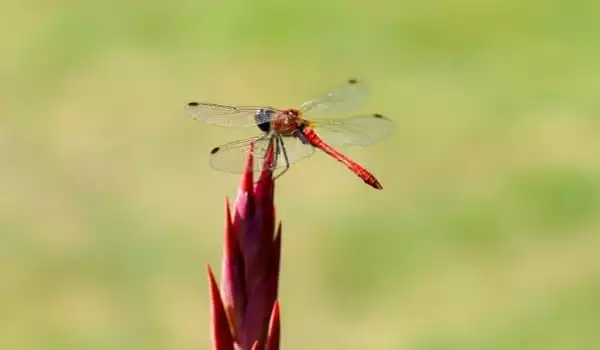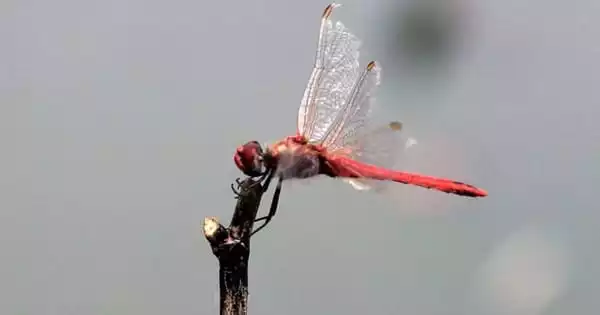New antibacterial packaging has been inspired by butterfly wings that shred microorganisms. According to an Australian-Japanese research team, their unique, bug-inspired nanotexture kills up to 70% of germs and continues its efficiency after being transferred to plastic. More than 30% of food produced for human use is lost or squandered. If bacterial growth is found, entire shipments may be refused.
Scientists have developed a natural antibacterial texture for use on food packaging to extend shelf life and minimize waste, inspired by the bacteria-killing wings of insects such as cicadas. An Australian-Japanese team of scientists created a nanotexture in the lab that kills up to 70% of germs and retains its efficiency when transferred to plastic. More than 30% of food produced for human consumption is wasted, with entire shipments being rejected if bacterial growth is identified.
The findings pave the way for major waste reduction, notably in meat and dairy exports, as well as extending shelf life and increasing the quality, safety, and integrity of packaged food on a large scale.
Researchers have looked to the natural ability of cicadas and other insects in an effort to drastically minimize waste, notably in meat and dairy exports, as well as to increase shelf life and improve the quality, safety, and integrity of packaged food.
We knew that the wings of cicadas and dragonflies were highly efficient bacteria killers and could help inspire a solution, but recreating nature is always difficult. We have now developed a nanotexturing that mimics the bacteria-destroying impact of insect wings and retains its antibacterial effectiveness when printed on plastic.
Professor Elena Ivanova
Distinguished According to Professor Elena Ivanova of RMIT University in Melbourne, Australia, the study team successfully converted a natural phenomenon to a manmade substance – plastic. “Getting rid of bacterial contamination is a significant step toward improving food shelf life,” she says.
“We knew that the wings of cicadas and dragonflies were highly efficient bacteria killers and could help inspire a solution, but recreating nature is always difficult. We have now developed a nanotexturing that mimics the bacteria-destroying impact of insect wings and retains its antibacterial effectiveness when printed on plastic. This is a significant step toward a natural, non-chemical, antibacterial packaging solution for the food and manufacturing industries.”
The study, published in ACS Applied Nano Materials, is a partnership between RMIT, Tokyo Metropolitan University, and Mitsubishi Chemical’s The KAITEKI Institute. In 2015, Australia shipped $US3.1 billion in food and agricultural exports to Japan, making it the country’s fifth largest exporter of such products.
How it works
The wings of dragonflies and cicada are covered by a dense network of nanopillars, which are blunted spikes the size of bacterium cells. When bacteria land on a wing, the nanopillar pattern forces the cells apart, rupturing their membranes and destroying them.
“It’s kind of like stretching a latex glove,” Ivanova explained. “As it gradually stretches, the weakest place in the latex becomes thinner and, eventually, tears.”
Ivanova’s team created its nanotexture by duplicating insect nanopillars and creating their own nanopatterns. Bacterial cells were examined at RMIT’s world-class Microscopy and Microanalysis Facility to analyze the pattern’s antibacterial effectiveness. The best antibacterial patterns were shared with the Japan team, who devised a method to replicate them on plastic polymer.

Back in Australia, Ivanova’s team analyzed the plastic nanopatterns and discovered the one that best reproduced insect wings while also being the simplest to fabricate and scale up. Because of its flexibility, plastic, according to Ivanova, is more challenging to work with than other materials such as silicon and metals.
“When employed in stiff plastic, the nanotexturing generated in this study holds its own. Our next task will be to modify it for use on softer plastics” She stated.
Since Ivanova and her colleagues discovered the bacteria-killing properties of insect wings a decade ago, they’ve been striving to create the best nanopattern to harness insects’ bacteria-killing abilities and apply it to a variety of materials. Until recently, it was impossible to find sufficient technology to replicate this nanotexturing on a production scale.
However, technology currently exists to scale up and apply antibacterial qualities to packaging, as well as a variety of other possible applications, such as personal protective equipment. Their new study expands on a 2020 investigation exploring the use of insect-inspired nanomaterials to combat superbugs.
The team is eager to work with possible collaborators on the next step of the research, which will involve scaling up the technology and establishing the optimal methods for mass producing the antibacterial packaging. Bacteria cells were observed at RMIT’s Microscopy and Microanalysis Facility, and the best antibacterial patterns were shared with a Japanese team, who devised a method to replicate the patterns on plastic polymer.
Dr. Ivanova’s team examined the plastic nanopatterns in Australia and discovered the one that best reproduced insect wings while also being the simplest to fabricate and scale up. Dr. Ivanova and her team discovered the bacteria-killing function of insect wings a decade ago and have been working ever since to build the best nanopattern to harness insects’ bacteria-killing abilities.
Until recently, it was impossible to find sufficient technology to replicate this nanotexturing on a production scale. However, technology currently exists to scale up and apply antibacterial qualities to packaging, as well as a variety of other possible applications, such as personal protective equipment.





